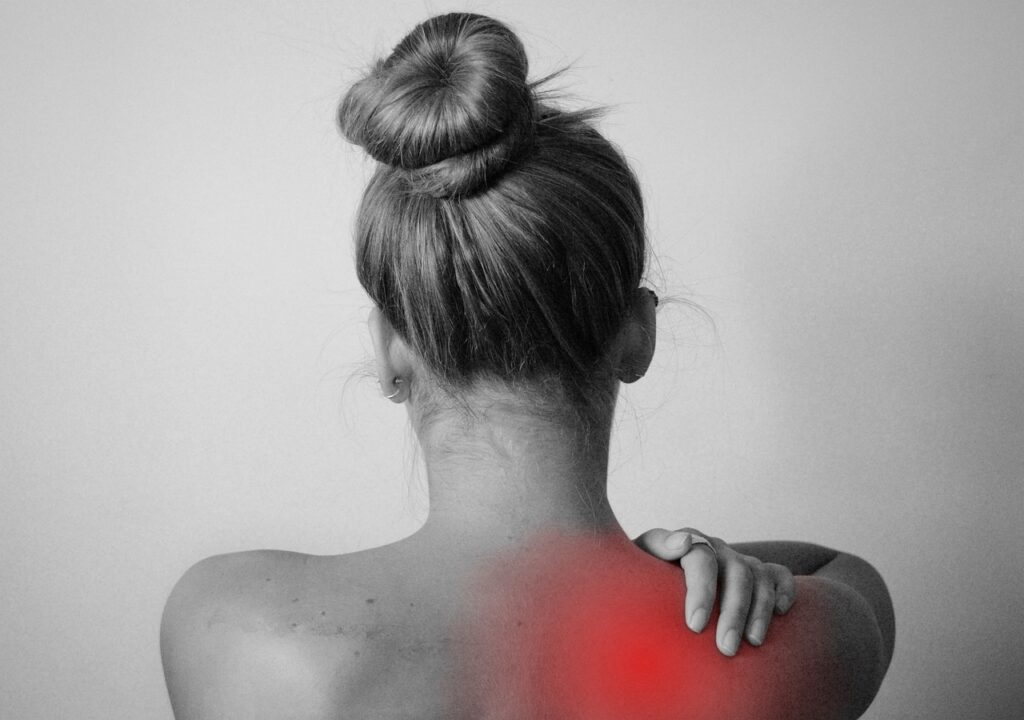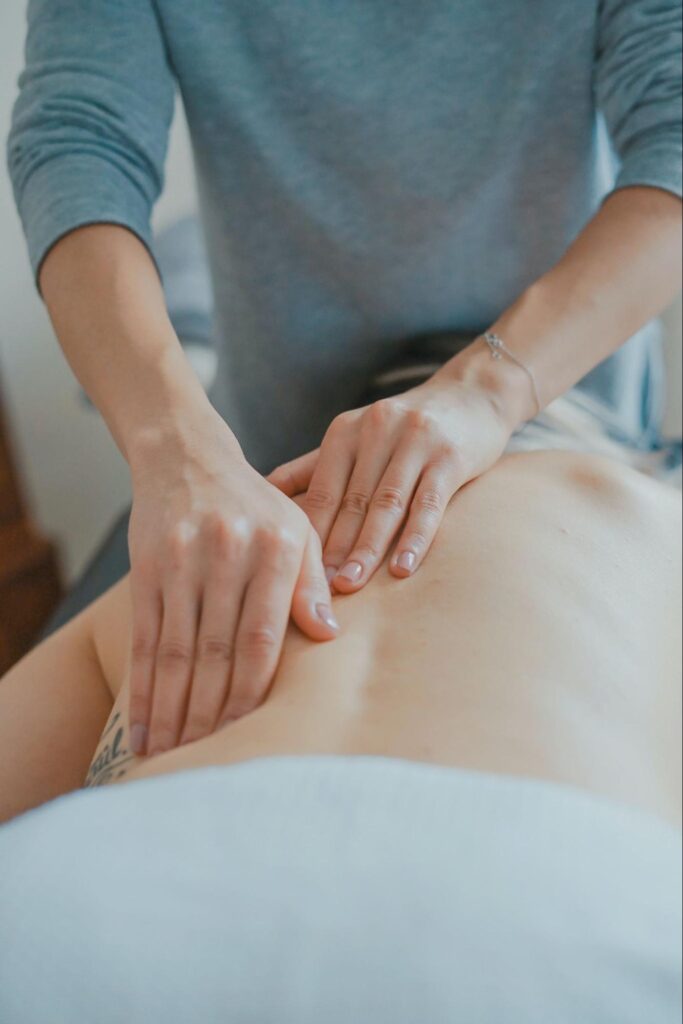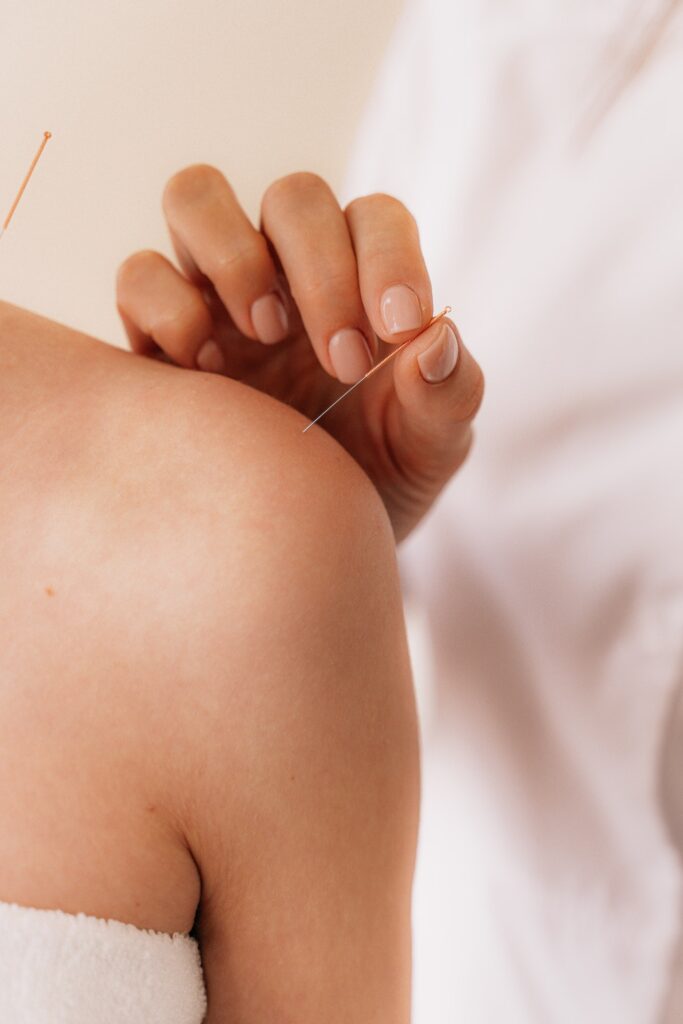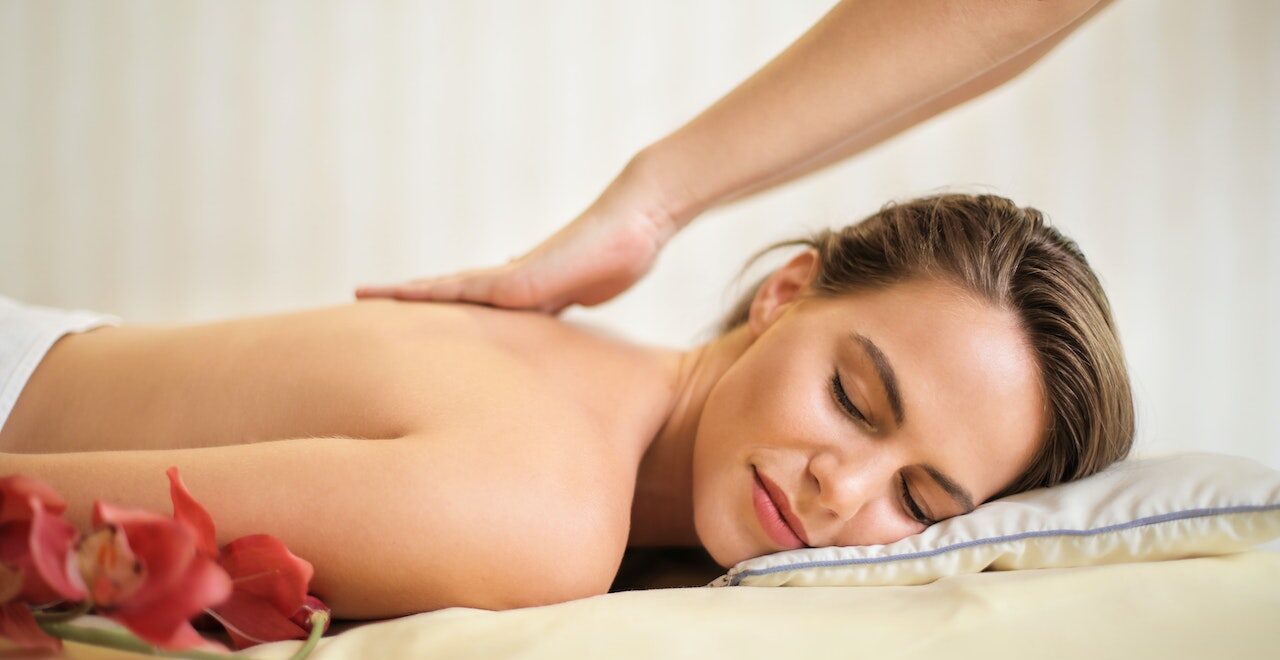Massage therapy is often seen as a luxury. But if you’re one of the 50 million Americans who suffer from chronic pain – massage is way more than a spa treatment. It’s a powerful tool that can ease pain and restore quality of life.
Massage is proven to relieve everything from back pain and neck pain, as well as pain from fibromyalgia, cancer, osteoarthritis, and migraine. And unlike prescription painkillers, there are no risks or nasty side effects.
So if you’re tired of chronic pain putting your life on hold, read on. In this article, we’ll cover six incredible ways massage therapy relieves pain – so you can get back to living life again!
But first, let’s lay the groundwork with some basics.
Acute Pain vs. Chronic Pain: What’s the Difference?
It’s all about the timing. Acute pain is short-lived, lasting less than three months. It comes on suddenly from a specific cause, whether that be an injury, illness, or surgery. Usually, acute pain resolves on its own as you heal.

Chronic pain, on the other hand, persists, lasting over three months – and in some cases, years. For some, chronic pain lingers long after the initial injury or illness has healed. When pain goes on for prolonged periods, it can seriously interfere with your daily life.
In medical settings, chronic pain is treated with painkillers, the main ones being NSAIDs or opioids. Yet these medications have serious long-term risks. NSAID overuse is linked with liver failure, while opioids are highly addictive.
That’s why many are turning to more holistic approaches to managing chronic pain, such as massage therapy.
How Does Massage Relieve Pain?
Massage triggers several physiological changes in the body that can ease pain. Here are a few:
Closes the “pain gate”
The gate control theory says that in order for pain to be felt, it must pass through a number of ‘gates’ before reaching the brain. Some gates transmit pain, while others inhibit it.
Massage therapy stimulates large nerve fibers that compete with pain signals. This in effect, blocks the ‘pain gate,’ altering perceptions of pain.

Relaxes muscles
When massage therapists apply pressure to the soft tissues of the body, it loosens tight muscles. As muscle tension relaxes, it can reduce painful muscle spasms and contractions.
And as pain is relieved, flexibility and range of motion increase. This can help patients improve activity levels to reduce future muscle soreness and stiffness.
Increases blood flow
Massage stimulates blood flow to any congested areas in the body. This delivers oxygen and nutrients to muscles to support healing. Boosting blood flow also helps the body carry away waste products that may be contributing to pain.
Lowers inflammation
It’s no secret that pain and inflammation go hand in hand. Thankfully, massage reduces the production of inflammatory cytokines, much like NSAIDs (but without side effects). In fact, one study found that even a short 10-minute massage was enough to lower inflammation.
Eases stress

Living with chronic pain is stressful. And stress can make you more sensitive to pain. Luckily, massage therapy works wonders for stress relief.
Massage therapy triggers your body’s relaxation response. This helps you shift from ‘fight or flight’ mode into a calm parasympathetic state. In fact, one study found that a one-hour massage reduced the stress hormone cortisol by an average of 31%.
Boosts mood
Massage increases the release of several mood-boosting chemicals, including endorphins and oxytocin. Endorphins, the chemicals responsible for a ‘runner’s high’ and oxytocin (the ‘love chemical’), both act as natural painkillers.
In addition, research shows massage therapy increases serotonin levels by 28% and dopamine by 31%! Serotonin is a neurotransmitter that promotes feelings of happiness and well-being, while dopamine is often dubbed the ‘pleasure chemical.’
It’s no secret that our mood influences our thoughts, which can have a profound effect on how we perceive pain. The more these happy chemicals circulate, the more positive your mindset will be. This can help you cope with pain better.
Promotes sleep
Sleep is often a struggle for people with chronic pain. It’s hard to relax and get restful sleep when you’re in throbbing pain non-stop. Yet lack of sleep can also trigger pain. It’s the ultimate catch-22.
Luckily, massage works as a natural sleep aid. Studies show it can reduce pain and improve sleep quality and duration. As mentioned, massage boosts serotonin, which is converted into the sleep hormone melatonin. So massage may help your body produce more melatonin naturally.
What Type of Massage is Best for Pain Relief?
While all forms of massage can improve your well-being, some types are more suited for chronic pain. All massage manipulates the body’s muscles and connective tissues. But techniques and pressure vary widely depending on the type of massage.
No matter which kind of massage you choose, communication is key. If the pressure is too intense, or a certain spot is especially tender, tell your massage therapist. They can adjust their technique and pressure, so you get the most benefits from your session.
Here are three types of massage that can offer pain relief:

Trigger point massage
A trigger point massage relieves pain by applying pressure to ‘trigger points,’ which are tight knots in the muscle tissues. Trigger points form when muscles are unable to relax. When these painful knots are massaged, it increases blood flow to the area. This helps release knots and ease pain.
Deep tissue massage
This technique uses more intense pressure than other forms of massage. During a deep tissue massage, sustained pressure is applied to the muscles and connective tissues using slow, deep strokes. This improves blood flow to relieve muscle tension and tightness and promote healing.
Therapeutic massage
Therapeutic massage, also known as medical massage, uses a blend of techniques to release pain and tension in problem areas in the body. During a therapeutic massage, techniques are tailored to each person’s specific goals. Pressure also varies depending on each muscle group’s needs.
What Other Holistic Treatments Relieve Pain?
While massage offers powerful pain-relieving benefits, other alternative treatments may also offer help. This includes acupuncture and chiropractic care.

Acupuncture involves inserting needles into specific spots in the body to stimulate the body’s energy meridians. This is believed to relieve pain by triggering the release of endorphins. Research shows acupuncture is effective at relieving chronic pain. What’s more, its effects persist long after treatment ends.
Chiropractic treatments may also ease pain. While massage targets muscle tension, chiropractic care focuses on the spine, joints, and bones. Spinal manipulation, a common chiropractic treatment, is shown to relieve neck pain, low back pain, and even migraine pain.
When these treatments are combined with massage, it may enhance pain-relieving effects.
Relieve Pain With Massage Therapy in Orland Park, IL
If you’re struggling with chronic pain and tired of letting it interfere with your life, we’re here to help. At Anchored in Health, our talented massage therapist tailors each massage session to your unique needs and goals. So if you live in the greater Chicago area, and are ready to finally find relief, follow these steps:
- Contact us with questions.
- Book your first massage therapy appointment here.
- Discover how massage can relieve your pain and improve your health and well-being.
Other Holistic Health Services Offered at Anchored in Health in Orland Park, IL
At Anchored in Health, massage therapy isn’t all we do. We offer a variety of alternative pain therapies, including chiropractic care and acupuncture. We also offer functional medicine, genetic testing, thermography, and the Shape ReClaimed program to help you live your healthiest life. If you’re in the Chicago area contact us to learn how we can help you feel your best.
Disclaimer: The information provided on this blog is for educational and informational purposes only and is not intended to diagnose, treat, cure, or prevent any disease. The content is not a substitute for professional medical advice, diagnosis, or treatment. Always seek the guidance of a qualified healthcare provider with any questions you may have regarding your health or a medical condition.
Reading this blog does not establish a doctor-patient relationship between you and Anchored In Health or any of its practitioners. Reliance on any information provided in this blog is solely at your own risk. For medical concerns, always consult a licensed healthcare provider.
References
- https://www.cdc.gov/mmwr/volumes/72/wr/mm7215a1.htm
- https://www.sciencedaily.com/releases/2017/04/170403123315.htm
- https://www.ncbi.nlm.nih.gov/pmc/articles/PMC2664516/
- https://www.ncbi.nlm.nih.gov/pmc/articles/PMC3930706/
- https://pubmed.ncbi.nlm.nih.gov/25784669/
- https://www.ncbi.nlm.nih.gov/pmc/articles/PMC6420526/
- https://thejournalofheadacheandpain.biomedcentral.com/articles/10.1007/s10194-011-0296-6
- https://www.ncbi.nlm.nih.gov/books/NBK553030/
- https://www.sciencedaily.com/releases/2012/02/120201141710.htm
- https://pubmed.ncbi.nlm.nih.gov/16162447/
- https://www.ncbi.nlm.nih.gov/pmc/articles/PMC3091428/
- https://pubmed.ncbi.nlm.nih.gov/29198932/
- https://pubmed.ncbi.nlm.nih.gov/22213489/
- https://www.cochrane.org/CD008112/BACK_spinal-manipulative-therapy-for-chronic-low-back-pain
- https://pubmed.ncbi.nlm.nih.gov/30973196/
